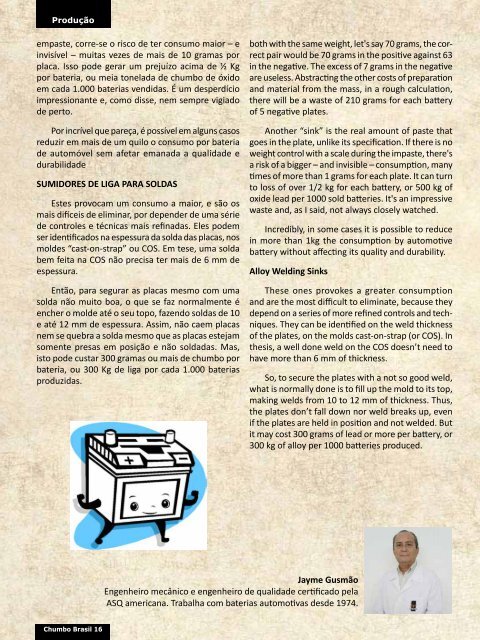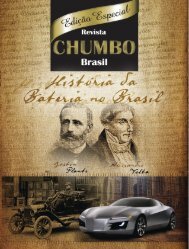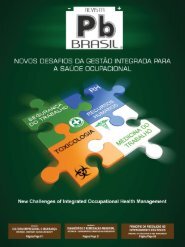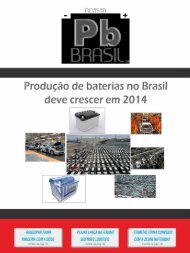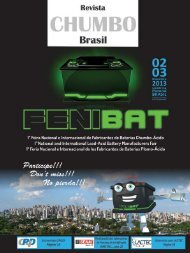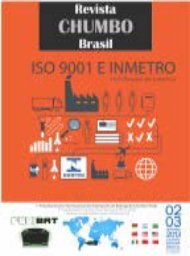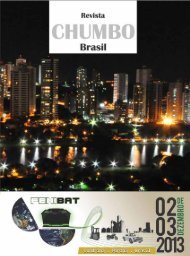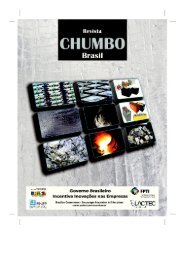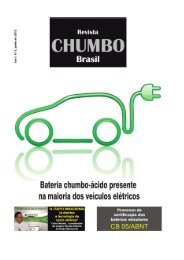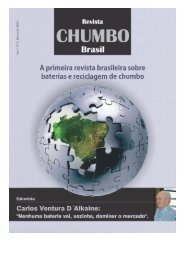edição 8
Na edição do 2º aniversário da Revista, ressaltamos a importância do leitor na criação das publicações, pois tudo é feito pensando em você. Por isso a Revista está recheada de matérias de suma importância para o nosso setor, como informações sobre Sebrae e certificados ISO, legislação ambiental, responsabilidade social e muito mais.
Na edição do 2º aniversário da Revista, ressaltamos a importância do leitor na criação das publicações, pois tudo é feito pensando em você. Por isso a Revista está recheada de matérias de suma importância para o nosso setor, como informações sobre Sebrae e certificados ISO, legislação ambiental, responsabilidade social e muito mais.
Create successful ePaper yourself
Turn your PDF publications into a flip-book with our unique Google optimized e-Paper software.
Produção<br />
empaste, corre-se o risco de ter consumo maior – e<br />
invisível – muitas vezes de mais de 10 gramas por<br />
placa. Isso pode gerar um prejuízo acima de ½ Kg<br />
por bateria, ou meia tonelada de chumbo de óxido<br />
em cada 1.000 baterias vendidas. É um desperdício<br />
impressionante e, como disse, nem sempre vigiado<br />
de perto.<br />
Por incrível que pareça, é possível em alguns casos<br />
reduzir em mais de um quilo o consumo por bateria<br />
de automóvel sem afetar emanada a qualidade e<br />
durabilidade<br />
SUMIDORES DE LIGA PARA SOLDAS<br />
Estes provocam um consumo a maior, e são os<br />
mais difíceis de eliminar, por depender de uma série<br />
de controles e técnicas mais refinadas. Eles podem<br />
ser identificados na espessura da solda das placas, nos<br />
moldes “cast-on-strap” ou COS. Em tese, uma solda<br />
bem feita na COS não precisa ter mais de 6 mm de<br />
espessura.<br />
Então, para segurar as placas mesmo com uma<br />
solda não muito boa, o que se faz normalmente é<br />
encher o molde até o seu topo, fazendo soldas de 10<br />
e até 12 mm de espessura. Assim, não caem placas<br />
nem se quebra a solda mesmo que as placas estejam<br />
somente presas em posição e não soldadas. Mas,<br />
isto pode custar 300 gramas ou mais de chumbo por<br />
bateria, ou 300 Kg de liga por cada 1.000 baterias<br />
produzidas.<br />
both with the same weight, let's say 70 grams, the correct<br />
pair would be 70 grams in the positive against 63<br />
in the negative. The excess of 7 grams in the negative<br />
are useless. Abstracting the other costs of preparation<br />
and material from the mass, in a rough calculation,<br />
there will be a waste of 210 grams for each battery<br />
of 5 negative plates.<br />
Another “sink” is the real amount of paste that<br />
goes in the plate, unlike its specification. If there is no<br />
weight control with a scale during the impaste, there's<br />
a risk of a bigger – and invisible – consumption, many<br />
times of more than 1 grams for each plate. It can turn<br />
to loss of over 1/2 kg for each battery, or 500 kg of<br />
oxide lead per 1000 sold batteries. It's an impressive<br />
waste and, as I said, not always closely watched.<br />
Incredibly, in some cases it is possible to reduce<br />
in more than 1kg the consumption by automotive<br />
battery without affecting its quality and durability.<br />
Alloy Welding Sinks<br />
These ones provokes a greater consumption<br />
and are the most difficult to eliminate, because they<br />
depend on a series of more refined controls and techniques.<br />
They can be identified on the weld thickness<br />
of the plates, on the molds cast-on-strap (or COS). In<br />
thesis, a well done weld on the COS doesn’t need to<br />
have more than 6 mm of thickness.<br />
So, to secure the plates with a not so good weld,<br />
what is normally done is to fill up the mold to its top,<br />
making welds from 10 to 12 mm of thickness. Thus,<br />
the plates don’t fall down nor weld breaks up, even<br />
if the plates are held in position and not welded. But<br />
it may cost 300 grams of lead or more per battery, or<br />
300 kg of alloy per 1000 batteries produced.<br />
Jayme Gusmão<br />
Engenheiro mecânico e engenheiro de qualidade certificado pela<br />
ASQ americana. Trabalha com baterias automotivas desde 1974.<br />
Chumbo Brasil 16


